Divers Reach The Bottom Of The ‘Great Blue Hole’ – What They Discovered Is Disturbing
While ‘The Great Blue Hole’ might look breathtaking from a bird’s eye view, for hundreds of years, we had no idea that it held a horrific secret in its depths. In a time of unbelievable ocean discovery, we are finding the missing marble head of Hercules and seeking the lost city of Atlantis. This massive, near-perfect round formation contrasts with the surrounding turquoise Caribbean Waters, plunging down around 420 feet beneath the ocean’s surface.
Recently, a team of explorers set out to see if they could find what was lurking in the depths of this untouched ocean formation.
Diving this Deep is a Risky Endeavor
Exploring the depths of the ocean is not something that just any diver can get up and decide to do one day.
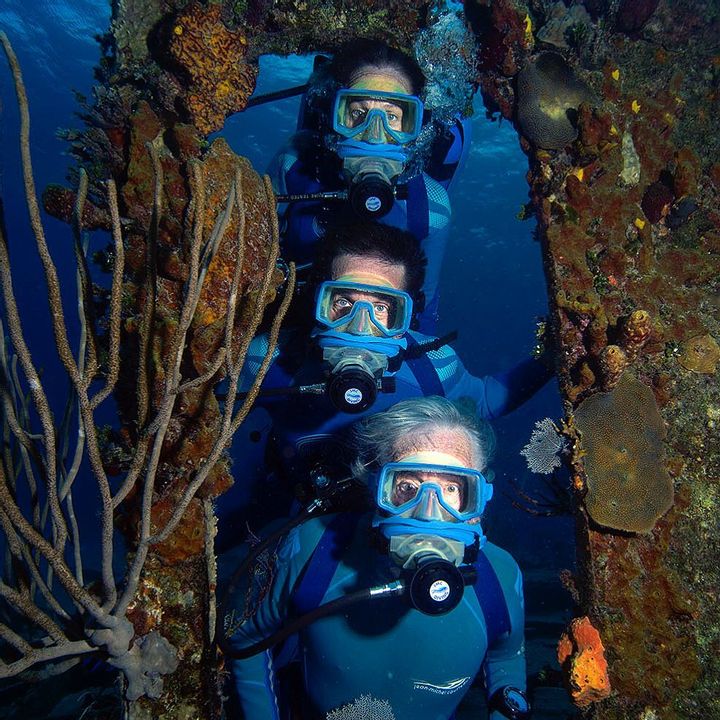
Source: @fcousteau/ Instagram
Diving into the deep requires a certain level of experience as it is a very risky endeavor. While very few divers have the experience and capability to dive into a place like ‘The Great Blue Hole,’ the Cousteau family was more than capable.
The Cousteau Family Knew They Had the Proper Experience
The Cousteau family has quite a rich history with the ocean.
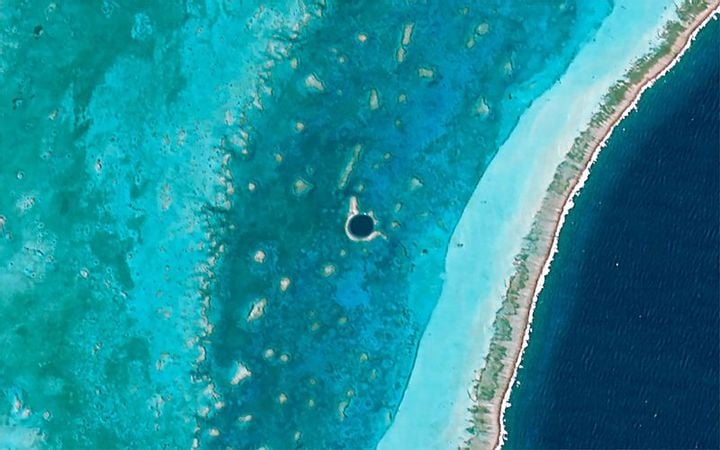
Source: @Axelspace Corporation/ Wikimedia Commons
Fabien Cousteau’s grandfather, Jacques Cousteau, was one of the great pioneers of diving and helped create what has now become modern scuba gear that divers all around the world use to this day. Jacques was no stranger to the murky depths of the ocean and had explored it on numerous occasions.
They Wanted to the Depths of the Belize Barrier Reef
However, it was Jacque’s dive into ‘The Great Blue Hole’ in Belize that left him speechless.
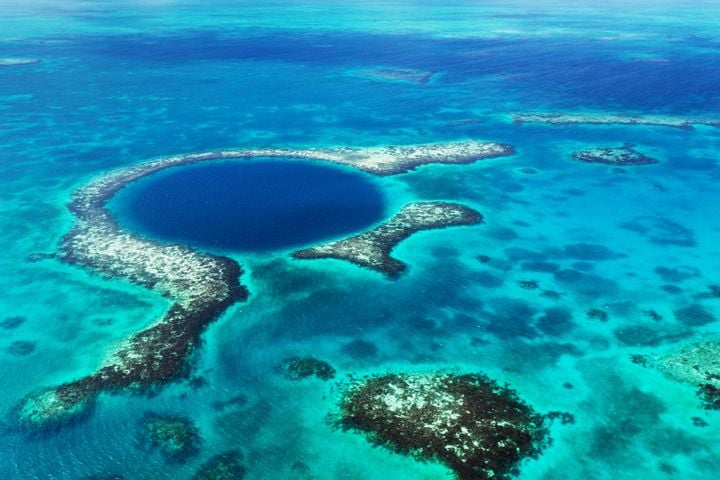
Source: tamifreed/ Depositphotos
The Belize Barrier Reef lies east off the Belize coast. It is one of the largest portions of the Mesoamerican Barrier Reef. The reef starts in the Yucatan Peninsula in Mexico and meets its end on the south side of Honduras.
‘The Great Blue Hole’ is an Unearthly Marvel
At the center of the reef lies a dark spot known as ‘The Great Blue Hole,’ which has intrigued and mystified explorers for decades.
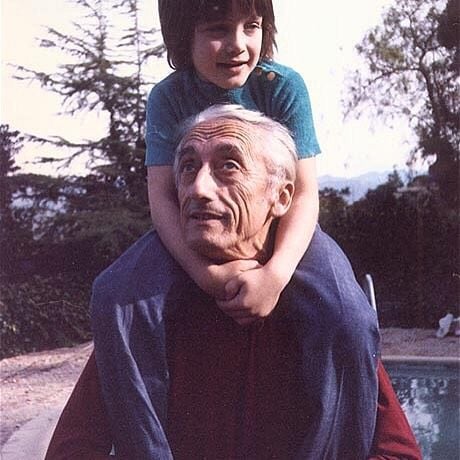
Source: @fcousteau/ Instagram
This hole lies on the eastern end of the Belize Barrier Reef, in a small portion of the larger reef known as Lighthouse Reef. As a marvel of the natural world, it has become near irresistible for scuba enthusiasts.
Origins Of The Great Blue Hole
According to studies, the origins of the Great Blue Hole can be traced back to over 150,000 years ago. This amazing geological process that created this underwater wonder is said to have started around 153,000 years ago and ended approximately 15,000 years ago.

Source: Wikimedia Commons
It formed at the end of the last Ice Age when numerous large caverns were flooded by rising sea waters. All of which resulted in the amazing fissure the world gets to admire today.
Its History and Protection
A British diver and author called Ned Middleton, who got to see the wonders of it with his own eyes, proposed the current name of the Great Blue Hole. This was after Middleton lived in Belize for six months.

Source: Wikimedia Commons
The Hole, which is nestled within Lighthouse Reef, is also a UNESCO-designated World Heritage Site. This makes it a protected location of great importance for Belize and the whole world at large.
Depths and Diversity
‘The Great Blue Hole’ is said to have a depth of 125 meters at its deepest point. This is why it demands careful consideration from divers before they can plan a descent and ascent to avoid decompression sickness.

Source: Ela Terra Eu Mar/YouTube
Besides its staggering depths, another reason adventurous divers hope to visit the location is because of its biodiversity. The Hole is home to different types of marine life, such as nurse sharks, hammerheads, reef sharks, and bull sharks.
It’s Large Enough to Fit Two Boeing 747s
‘The Great Blue Hole’ is an enormous ocean anomaly, large enough to fit two Boeing 747s side by side.

Source: seg.org
However, it is one of the trickiest spots for divers to navigate, and exploring its depths requires having completed at least 24 previous dives in different locations.
However, Much of It Remains Unexplored
Over the years, it has become an extremely popular diving destination, Bringing In Scuba divers from all over the world.
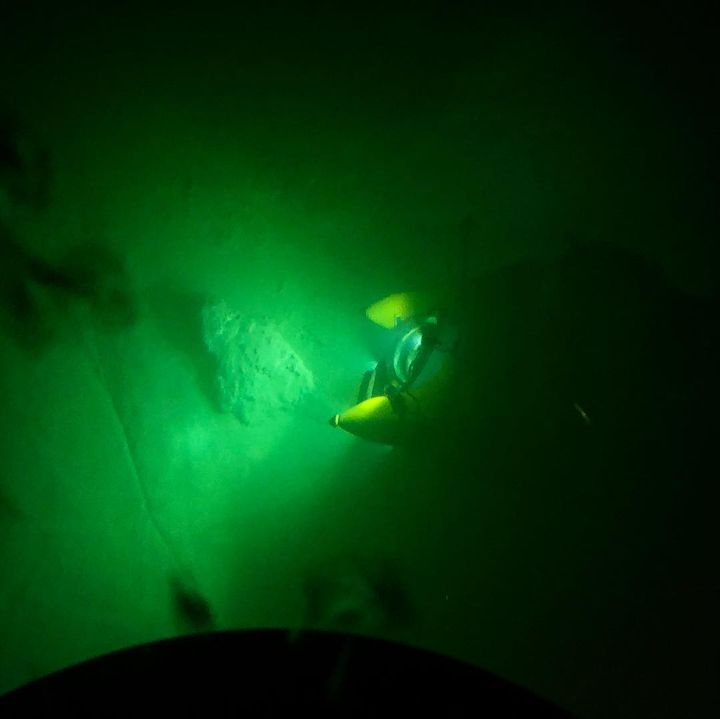
Soruce: @fcoustearu/ Instagram
However, most of what ‘The Great Blue Hole’ holds in the depths is completely unknown, as most of it has remained unexplored. The secrets it keeps we can only imagine, which is why these divers wanted so badly to explore it.
Fabien Cousteau’s Interest in the Hole was Personal
While Fabian is a professional diver, his interest in the hole is thanks to his grandfather, Jacques, who had visited for a dive in the early 1970s.
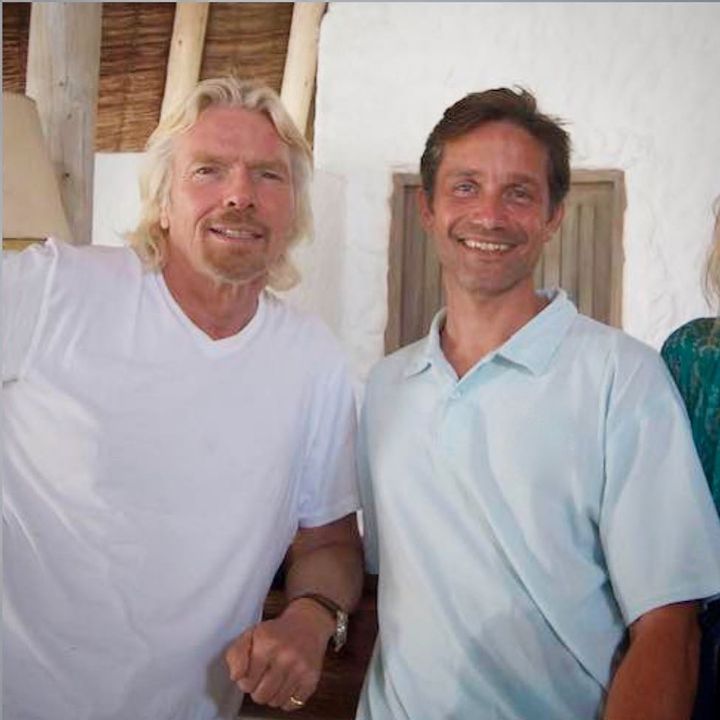
Source: @fcousteau/ Instagram
Jacques said that after exploring ‘The Great Blue Hole,’ he was confident that it was one of the top five diving spots on Earth. With less sophisticated equipment available in the 1970s, Jacques could only get a small peek at the world beneath the surface.
However, Cousteau Wasn’t the Only One Who Was Interested
Fabien’s plan drew interest from other ocean explorers, including the legendary adventure, conservationist, and billionaire Sir Richard Branson.
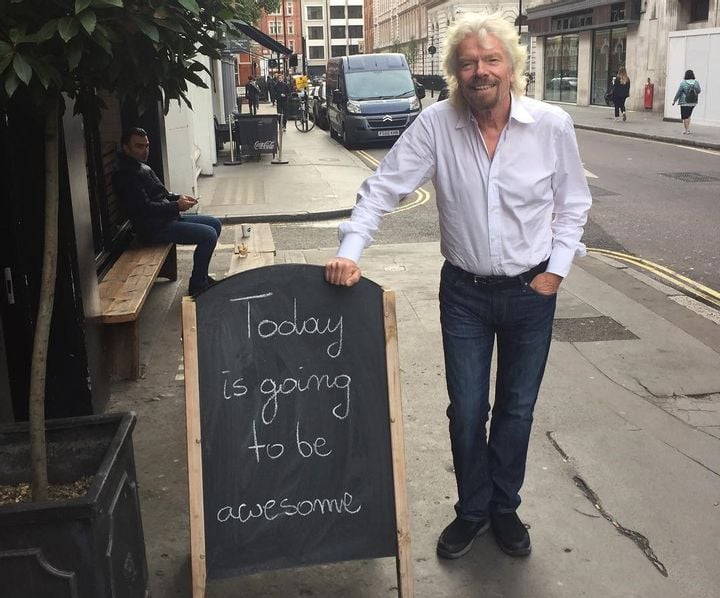
Source: @richardbranson/ Instagram
Branson is the owner of Virgin Group and the subsequent Virgin Oceanic, which has a fleet of high-end submersible vehicles. Branson, who is very passionate about ocean exploration, was keen to join Cousteau in his Caribbean adventure.
Branson and Cousteau Assembled a Team
The two decided to team up to make their way to the bottom of ‘The Great Blue Hole.’

Source: @fcousteau/ Instagram
They invited Erika Bergman, a renowned oceanographer, to be the third explorer on their team. She would also be the one to pilot their submarine, Aquatica.
Branson Wanted to Use This Trip To Educate Others on Sustainability
As a man who has seen a fair bit of success through his various business ventures, Branson now spends his time trying to find ways to raise awareness about climate change and give back to society.
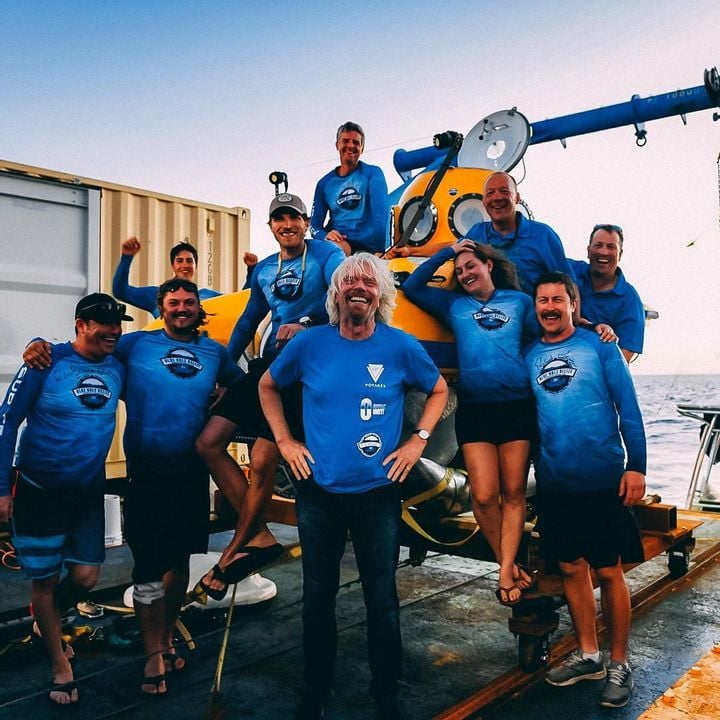
Source: @aquaticasubs/ Instagram
In many ways, this trip for Branson was about promoting ecological sustainability and educating the public on the needs of our oceans.
He Wants to Make the Ocean More Accessible to People
Branson noted that he wanted to follow the doctrine of Jacques Cousteau, which read,
“people protect what they most love.”

Source: wohi.edu
Branson sees a great deal of importance in our oceans and wants to make them more accessible to others. His summit on global warming at his private British Virgin Islands residence was a major success.
Branson Noted ‘The Great Blue Hole’ Was Unique to Other Deep Dives
He also knew that a dive into ‘The Great Blue Hole’ would be wholly unique.
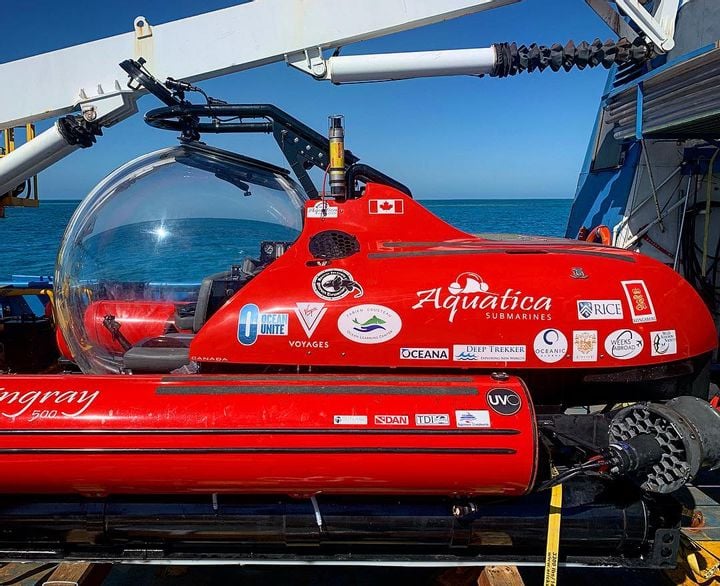
Source: @fcousteau/ Instagram
This Blue Hole was far from the largest or deepest in the ocean, its unique geological composition and shape have long made it impossible to penetrate to the absolute depths. Branson referred to it as a “ planetary inner space” mission.
The Team Set Up a Livestream for the Event
Cousteau, Branson, and Bergman decided to live stream their descent into ‘The Great Blue Hole’s’ depths, using the Discover Channel as a platform to broadcast their feed worldwide in real-time.
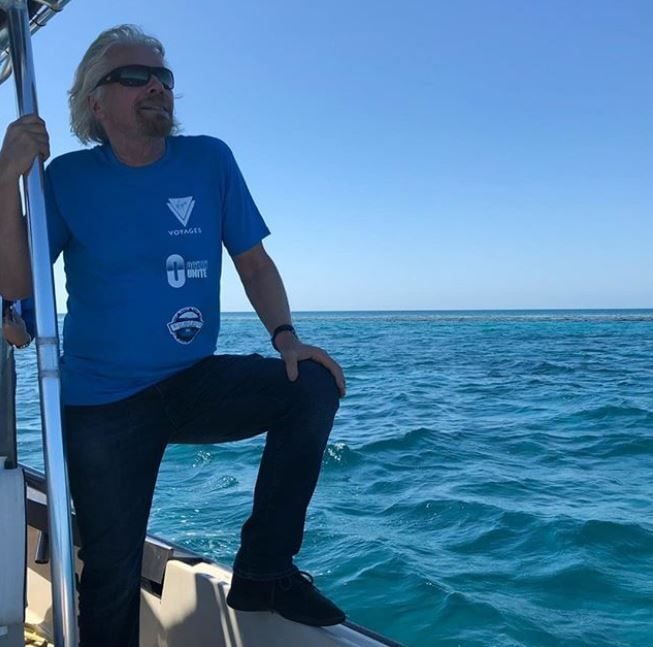
Source: @richardbranson/ Instagram
At this point, preparations for this historical trip were complete, and they were ready to get the cameras rolling.
Public Interest in Deep-Sea Exploration Was at an All-Time High
One of the most recent bouts of excitement surrounding a deep-sea mission was when world-renowned movie director and ocean adventurer, James Cameron, took a submarine to the bottom of the Mariana Trench, which is the deepest-known point in the ocean.
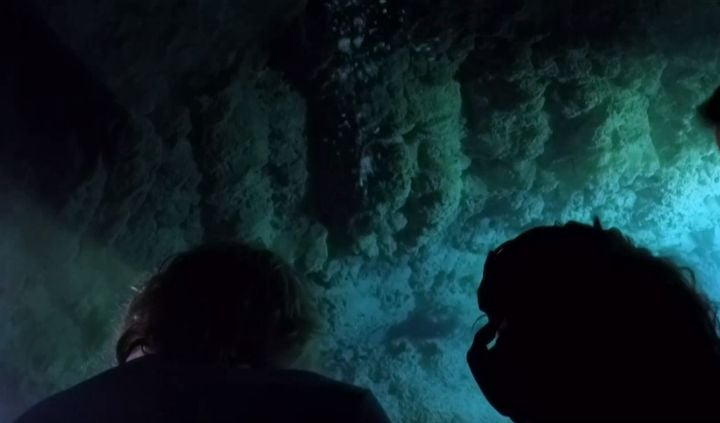
Source: YouTube
Branson, Cousteau, and Bergman knew they would be diving into much shallower waters, meaning they could take advantage of a more spacious viewing dome.
The Crew’s First Find Was a Series of Underwater Caves
During the initial descent, the crew’s visibility was reduced by the submarine kicking up sediment.
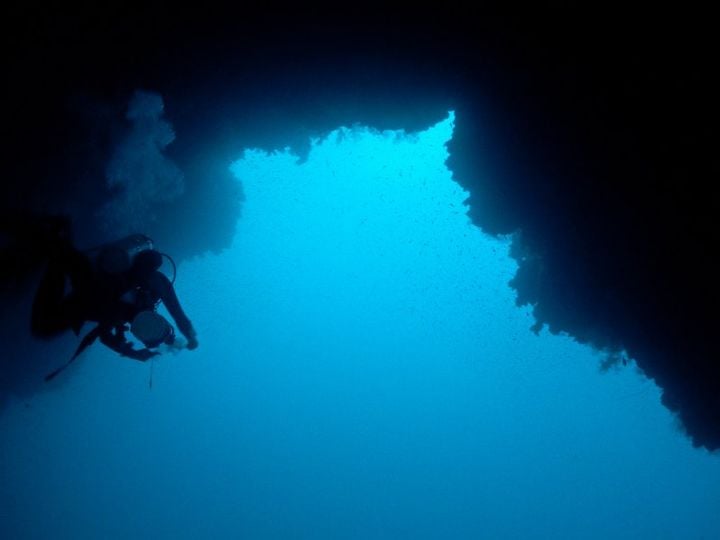
Soruce: traveltriangle.com
However, soon enough, the sediment dissipated Into the depths and uncovered an outstanding geological formation — a large series of caves with hanging stalactites. This initial discovery was not at all what the crew expected to find.
It Could Only Mean One Thing
After some pondering, the crew determined that the existence of underwater stalactites could only mean one thing.

Source: mohamedraheem/ Depositphotos
Sir Richard Branson noted that this discovery was a “ stark reminder of the dangers of climate change.” In fact, these stalactites were never formed underwater.
These Caves Denoted Where Water Levels Once Sat
Caribbean sea levels rose rapidly at the end of our last major Ice Age, swallowing up vast stretches of dry Earth.
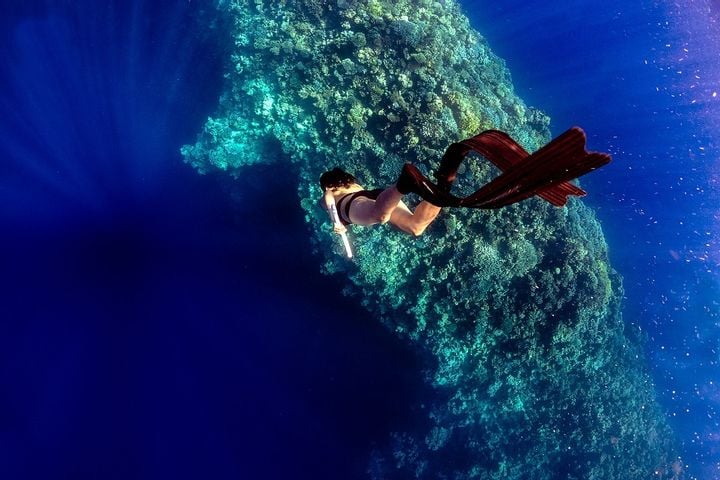
Source: @hyang_su__/ Instagram
Now around 200 ft beneath the surface of the ocean, the colors of these rock formations had greatly shifted, denoting where sea levels lay previously. These cave systems were likely once home to many land creatures.
A Few Years Before Their Trip, Another Team of Researchers Dove Into the Blue Hole
The Aquatica crew was not the first to try and dive into ‘The Great Blue Hole.’
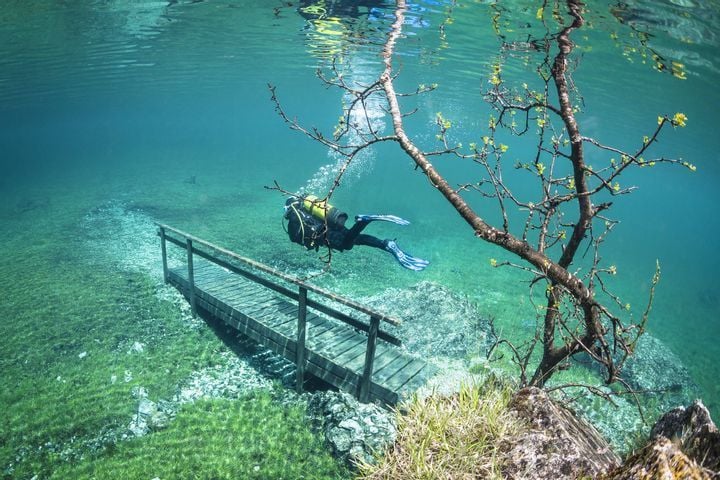
Source: SamBlonde/ Twitter
Many years before, a team of researchers from Louisiana State University and Rice University dove into this ocean marvel, collecting geological samples from its sheer walls at varying depths. However, this team had a different goal in mind.
They Hoped Their Trip Would Help Them Solve A Different Mystery
This dual university crew had hopes that the samples they uncovered would bring them one step closer to solving a historical mystery that occurred many miles from the ocean and the deepest, thickest jungles of Central America.
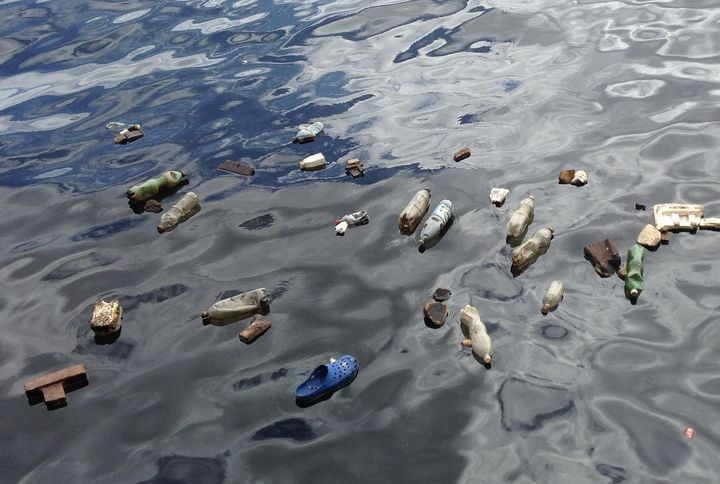
Soruce: tkeremmel/ Pixabay
This team wanted to know if their discoveries could help them understand what happened to the Mayans.
Could ‘The Great Blue Hole’ Be the Answer to the Long-Lost Mayan Civilization?
A good portion of Central America, including Belize, had once been home to one of the world’s most relatively advanced civilizations — the Mayans.
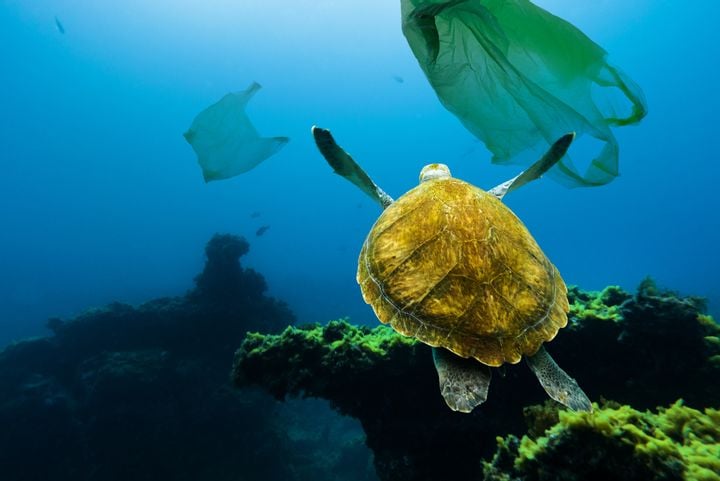
Source: Alamy
One mystery the historians have yet to find an answer to was the seemingly mass abandonment of the many cities throughout the Mayan Kingdom, which led to the collapse of the culture. Did ‘The Great Blue Hole’ hold the answers they were looking for?
This Team Eventually Found Themselves in a Toxic Layer
Unfortunately, the university team eventually found themselves in a toxic and deadly layer of hydrogen sulfide, floating around 30 meters beneath the ocean’s surface.
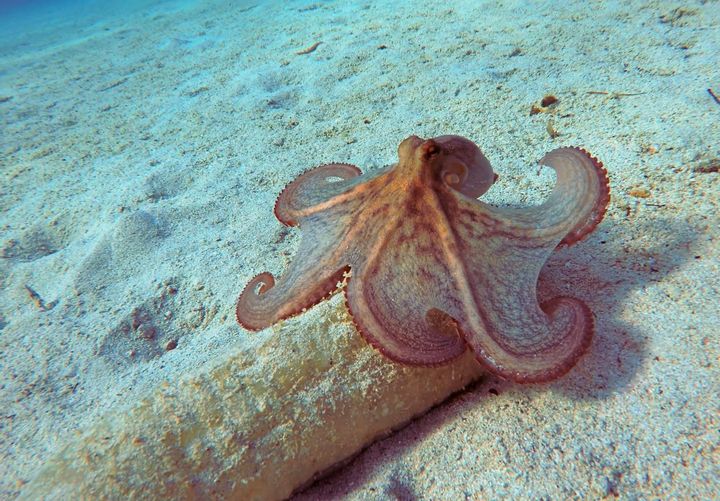
Source: gizmodo.com
This cloud of hydrogen sulfide, which was 20 feet thick, had the ability to suffocate any marine life in its grasp and corrode the metal on there submersible. The team found several remains of invertebrates that had been trapped and killed in the noxious water
Luckily for Branson and Cousteau, Their Vessel Was Equipped to Continue
This noxious layer of hydrogen sulfide often marks the threshold to which divers can travel.
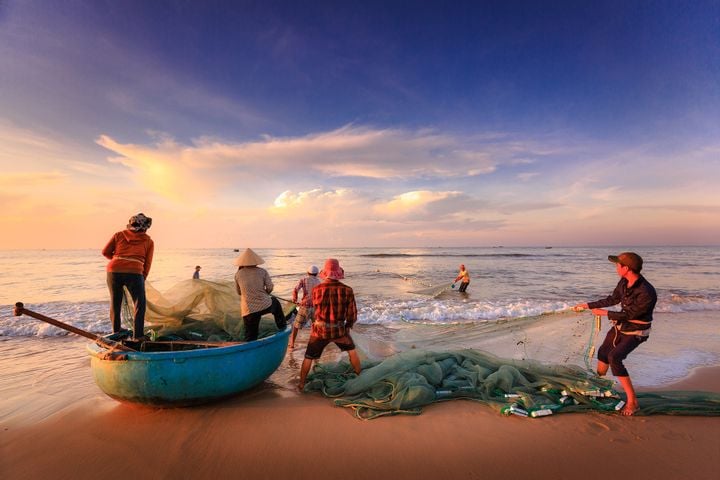
Source: Quang Nguyen vihn/ Pixabay
However, the Aquatica crew had prepared for this layer using a vessel equipped to survive the harmful environment. Thankfully, they were able to continue their descent.
The Team’s Plan was to Map the Geological Anomalies at the Bottom
The team managed to get to the bottom of the hole after making their way through the thick cloud of hydrogen sulfide, a never-before-accomplished feat.
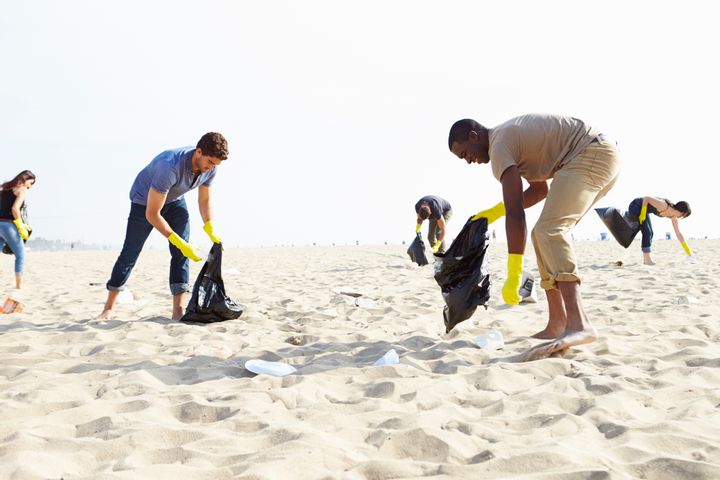
Source: inhabitat.com
Fabien was excited he would be able to continue his grandfather’s work, mapping the lowest reaches of this geological anomaly. The team hopes that they could return to the surface with some scientifically important discoveries.
From the Top, ‘The Great Blue Hole’ Seemed Untouched
As the Aquatica crew mapped out the depths of ‘The Great Blue Hole,’ they began feeling worried about the discoveries they were making.

Source: Monica Volpin/ Pixabay
From a bird’s eye view, the Blue Hole looks like a pristine ocean wonder, untouched by man. However, as they continued diving deeper, the reality of the pit was uncovered.
What They Found on the Bottom Was a Completely Different Story
The crew discovered several plastic bags, plastic bottles, and garbage lining the hole of the pit.
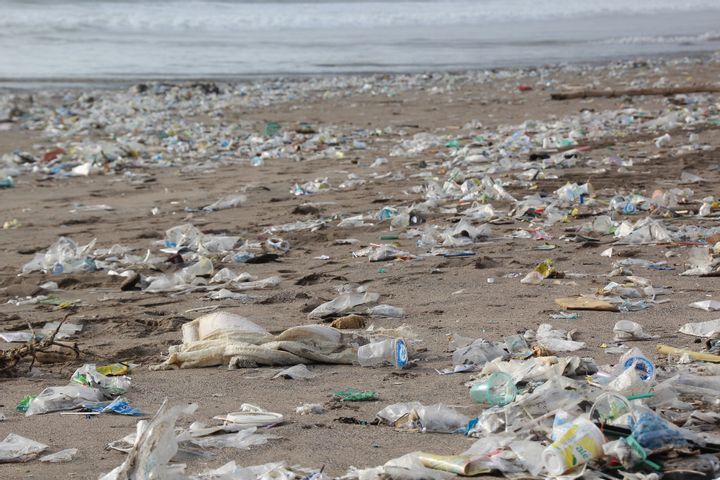
Source: H. Hach/ Pixabay
As with many other parts of the ocean, ‘The Great Blue Hole’ had become a landfill for human waste.The team was in absolute disgust and shocked to find out that such a seemingly pristine natural wonder had been turned into a garbage pile.
Change Is Crucial If We Want to Enjoy Our Oceans Decades from Now
In recent years, our planet has faced several environmental catastrophes, and plastic waste is among the biggest.
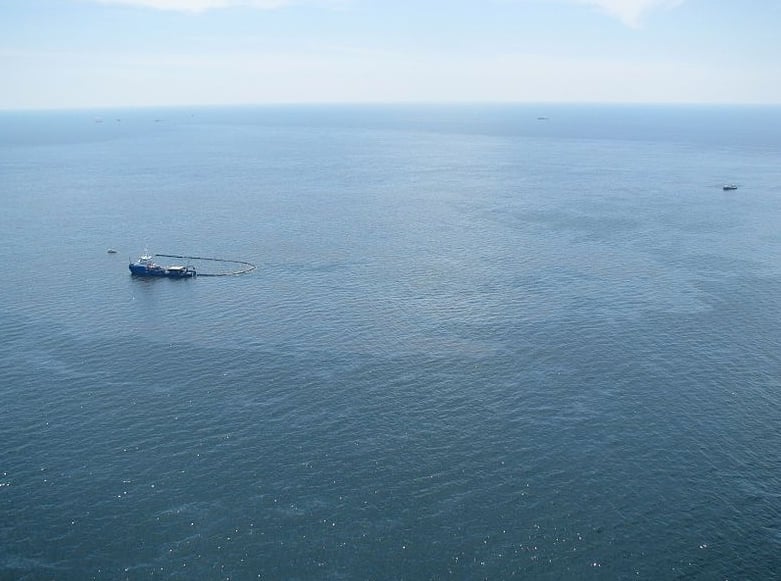
Source: climateaction.org
It is clearer than ever that there is no better time to make changes than right now. Several influential figures have decided to work together, fighting the great threat of plastic pollution alongside Branson.
